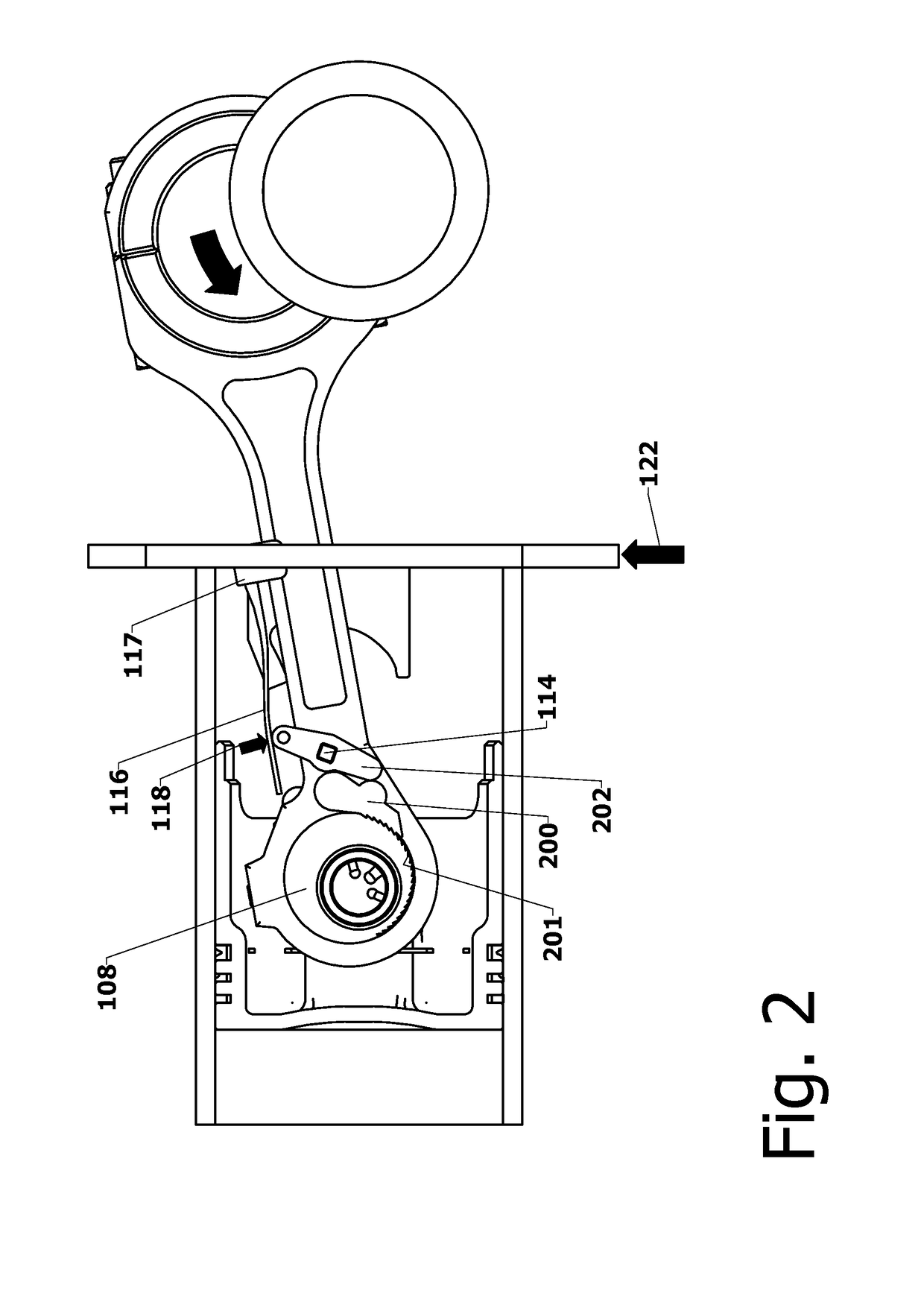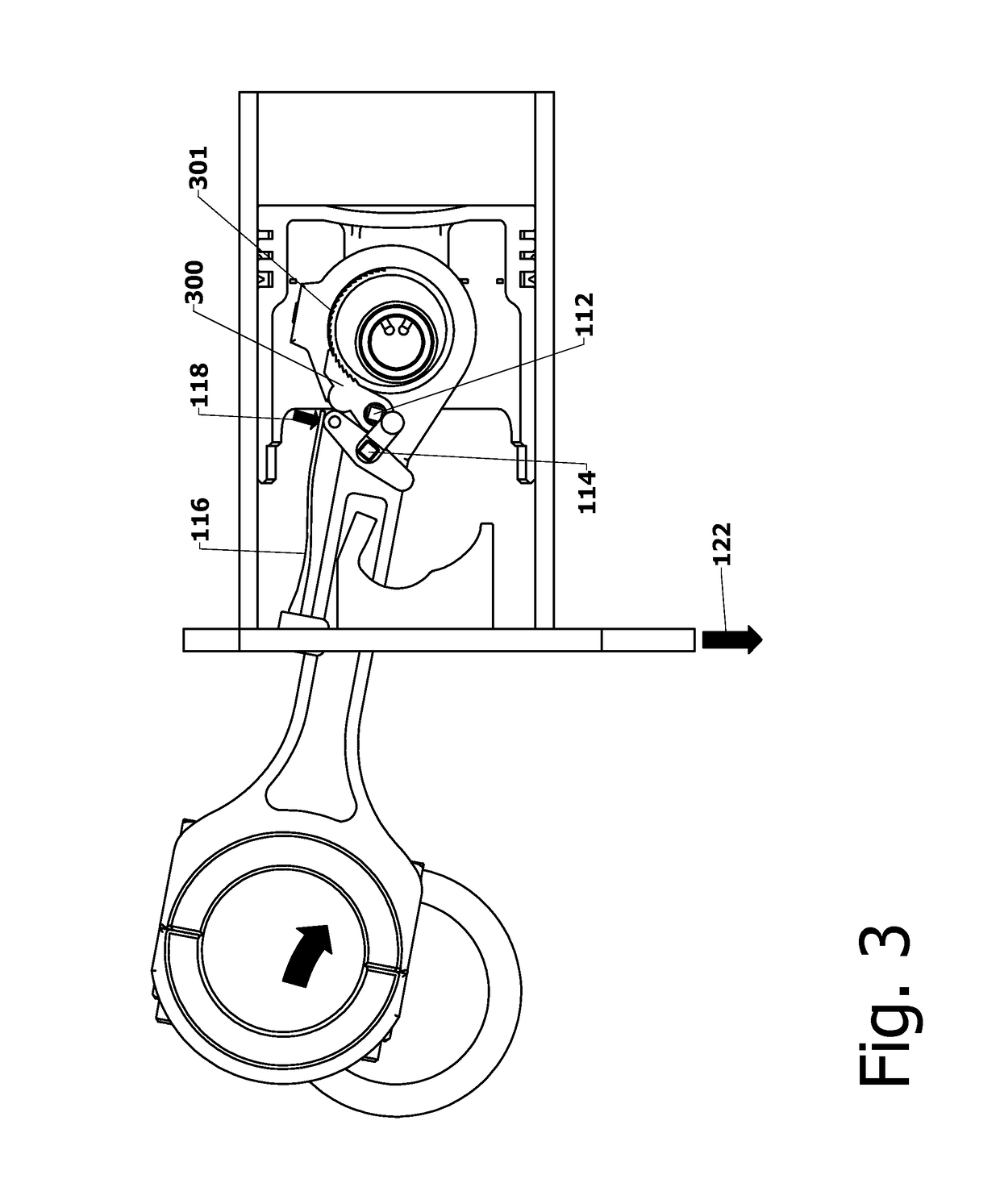Variable compression connecting rod
a compression connecting rod and variable technology, applied in the direction of cranks, machines/engines, mechanical equipment, etc., can solve the problems of reducing engine efficiency, increasing heat transfer losses, and reducing engine efficiency, so as to improve engine thermodynamic efficiency, increase engine temperature and pressure, and achieve more useful work.
- Summary
- Abstract
- Description
- Claims
- Application Information
AI Technical Summary
Benefits of technology
Problems solved by technology
Method used
Image
Examples
Embodiment Construction
[0055]Upon examination of the following detailed description the novel features of the present invention will become apparent to those of ordinary skill in the art or can be learned by practice of the present invention. It should be understood that the detailed description of the invention and the specific examples presented, while indicating certain embodiments of the present invention, are provided for illustration purposes only. Various changes and modifications within the spirit and scope of the invention will become apparent to those of ordinary skill in the art upon examination of the following detailed description of the invention and claims that follow.
[0056]The prior art and the invention are described with reference to four cycle internal combustion engines, but it is to be understood that the invention is applicable to other reciprocating engines, pumps and compressors that might benefit from variable compression. In the description “upper”, “top”, “above” and “head” refe...
PUM
 Login to View More
Login to View More Abstract
Description
Claims
Application Information
 Login to View More
Login to View More - R&D
- Intellectual Property
- Life Sciences
- Materials
- Tech Scout
- Unparalleled Data Quality
- Higher Quality Content
- 60% Fewer Hallucinations
Browse by: Latest US Patents, China's latest patents, Technical Efficacy Thesaurus, Application Domain, Technology Topic, Popular Technical Reports.
© 2025 PatSnap. All rights reserved.Legal|Privacy policy|Modern Slavery Act Transparency Statement|Sitemap|About US| Contact US: help@patsnap.com



